Deciding if it’s time for assisted living can be a challenging process. You’ll want to assess how well your loved one can manage daily tasks, like dressing or bathing, and whether they handle medications correctly. It’s also essential to take into account their emotional well-being and safety at home. As you weigh these factors, keep in mind that a supportive environment can greatly enhance their quality of life. What signs should you look for next?
Key Takeaways
- Evaluate if daily tasks like dressing, bathing, and meal preparation are becoming challenging for the individual.
- Frequent medication errors or missed doses may indicate a need for assistance with medication management.
- Observe any significant changes in physical health, cognitive abilities, or social engagement that could require additional support.
- Consider whether caregivers feel overwhelmed and unable to provide the necessary assistance without help.
- Assisted living can enhance social interactions and provide a supportive environment, reducing feelings of isolation and loneliness.
Understanding Activities of Daily Living (ADLs)

Understanding Activities of Daily Living (ADLs) is essential when considering the need for assisted living, as these everyday tasks are fundamental to maintaining independence and quality of life.
ADLs include dressing, bathing, and toileting, and many seniors find these activities increasingly difficult. In fact, around 13.4% of adults aged 75 and older required personal care assistance in 2023.
Struggling with ADLs not only impacts seniors but can overwhelm caregivers as well. Assisted living communities offer crucial support with daily tasks, enabling seniors to maintain their independence while providing caregivers with much-needed relief and peace of mind.
Managing Medications Effectively
When it comes to managing medications effectively, many seniors face significant challenges that can impact their health and well-being.
It’s vital to guarantee that medications are taken correctly to avoid complications. Here are some strategies to help you manage medications:
- Create a daily medication schedule to keep track of doses.
- Use pill organizers to prevent confusion and missed doses.
- Set reminders on your phone or through a caregiver for timely administration.
- Regularly review medications with your healthcare provider to confirm they’re still appropriate.
Assessing the Level of Care Needed

How can you determine if assisted living is the right choice for your loved one? Start by evaluating their ability to manage daily activities like dressing, bathing, and meal preparation. If they’re struggling, it might be time to contemplate assistance.
Also, assess their medication management; frequent errors can lead to serious health issues. Observe any changes in physical health, cognitive abilities, or social engagement, as these can indicate a need for more support.
Finally, reflect on your own capacity as a caregiver; if you’re feeling overwhelmed, assisted living can provide the necessary care and relief for both you and your loved one.
Overcoming Isolation and Loneliness
Is your loved one feeling increasingly isolated and lonely at home? Moving to assisted living can greatly enhance their social interactions and overall well-being.
Is your loved one experiencing loneliness at home? Assisted living can significantly improve their social life and overall happiness.
In these communities, residents can engage with others and participate in activities designed to foster connections.
Consider these benefits:
- Opportunities for daily social interactions with staff and peers
- Organized events like fitness classes and game nights
- Access to community pets, promoting companionship
- Supportive environments that combat feelings of loneliness
Coordinating Care and Health Services

While overcoming isolation and loneliness is an important aspect of senior living, coordinating care and health services is equally essential for maintaining overall well-being.
Assisted living communities simplify this process, offering a centralized approach to health care. Here, you’ll find staff dedicated to regular communication with your doctors and specialists, ensuring everyone is on the same page regarding your health needs.
This level of coordination helps prevent medication errors and addresses health issues before they escalate. By providing access to on-site health services, assisted living communities not only enhance your quality of life but also relieve the burden on family caregivers.
Ensuring Home Safety for Seniors
Guaranteeing home safety for seniors is essential, especially as age-related challenges can increase the risk of accidents.
To create a safer living environment, consider these important measures:
- Install grab bars in bathrooms and near stairs for support.
- Guarantee proper lighting throughout the home, particularly in hallways and staircases.
- Remove tripping hazards like loose rugs and clutter from floors.
- Keep emergency contact numbers visible and accessible for quick reference.
Monitoring Changes in Physical and Cognitive Health

How can you effectively monitor changes in physical and cognitive health for seniors? Start by observing daily activities; note any difficulties with tasks like dressing or bathing.
Regular check-ins can help identify signs of cognitive decline, such as memory lapses or confusion. Keep track of medication routines to prevent mismanagement, which is common among seniors.
Establishing a schedule for health assessments and doctor visits guarantees any emerging health issues are promptly addressed. Encourage social engagement to combat loneliness, as interaction can positively impact cognitive function.
Ultimately, maintaining open communication with seniors about their needs fosters a supportive environment for monitoring their health.
Evaluating Financial Considerations and Options
Monitoring changes in physical and cognitive health is essential for understanding when a senior might benefit from assisted living, but it’s equally important to evaluate the financial considerations and options available.
Evaluating both health changes and financial options is crucial in determining the right time for assisted living for seniors.
Consider these key factors:
- The cost of in-home care may exceed assisted living expenses.
- Assisted living often includes various services in one transparent fee.
- Financial assessments can help you understand affordability.
- Planning resources are available to assist families in making informed decisions.
Frequently Asked Questions
What Types of Activities Are Offered in Assisted Living Communities?
Assisted living communities offer a variety of activities designed to engage residents and promote social connections.
You can participate in fitness classes, arts and crafts, game nights, and movie screenings. Many communities also organize outings, allowing you to explore local attractions.
Additionally, there’s often a focus on wellness programs, ensuring you stay active and healthy.
These activities not only enhance your quality of life but also foster friendships with fellow residents.
How Do Assisted Living Communities Handle Emergency Situations?
Assisted living communities prioritize safety by having trained staff available 24/7 to respond to emergencies.
They conduct regular safety drills and maintain clear evacuation plans, ensuring residents know what to do in case of a crisis.
Staff members are trained in first aid and CPR, ready to assist with medical emergencies.
Additionally, they often have emergency alert systems in place, allowing residents to call for help quickly, fostering a secure environment for everyone.
Can Pets Live With Residents in Assisted Living?
Yes, many assisted living communities welcome pets, recognizing the comfort and companionship they provide.
You’ll find that some facilities even have specific pet policies, which may include breed restrictions or size limits.
Living with a pet can greatly enhance your quality of life, encouraging social interactions and reducing feelings of isolation.
Before choosing a community, it’s wise to inquire about their pet policies to guarantee a smooth shift for both you and your furry friend.
What Is the Typical Staff-To-Resident Ratio in Assisted Living?
In assisted living, the typical staff-to-resident ratio varies by community, but it often ranges from 1:5 to 1:15.
This ratio guarantees residents receive adequate attention and personalized care. Higher ratios may indicate more staff available for assistance, particularly during peak hours.
Communities assess their staffing needs based on resident health and activity levels, so it’s essential to inquire during tours about specific ratios and how they impact resident care and safety.
How Often Are Health Assessments Conducted in Assisted Living?
In assisted living communities, health assessments are typically conducted regularly, often every six months or as needed.
These evaluations help track residents’ health status and identify any changes that may require adjustments in care. Staff members, including nurses, perform these assessments, ensuring residents receive appropriate support for their needs.
This proactive approach not only enhances the quality of care but also provides peace of mind for both residents and their families.
Bottom Line
Deciding if it’s time for assisted living can be challenging, but recognizing the signs is essential. By evaluating daily living activities, medication management, and overall health, you can make an informed choice. Remember, assisted living isn’t just about care; it offers a supportive community that can alleviate feelings of isolation and provide peace of mind for both you and your family. Prioritizing safety, connection, and well-being can greatly enhance your quality of life as you age.




